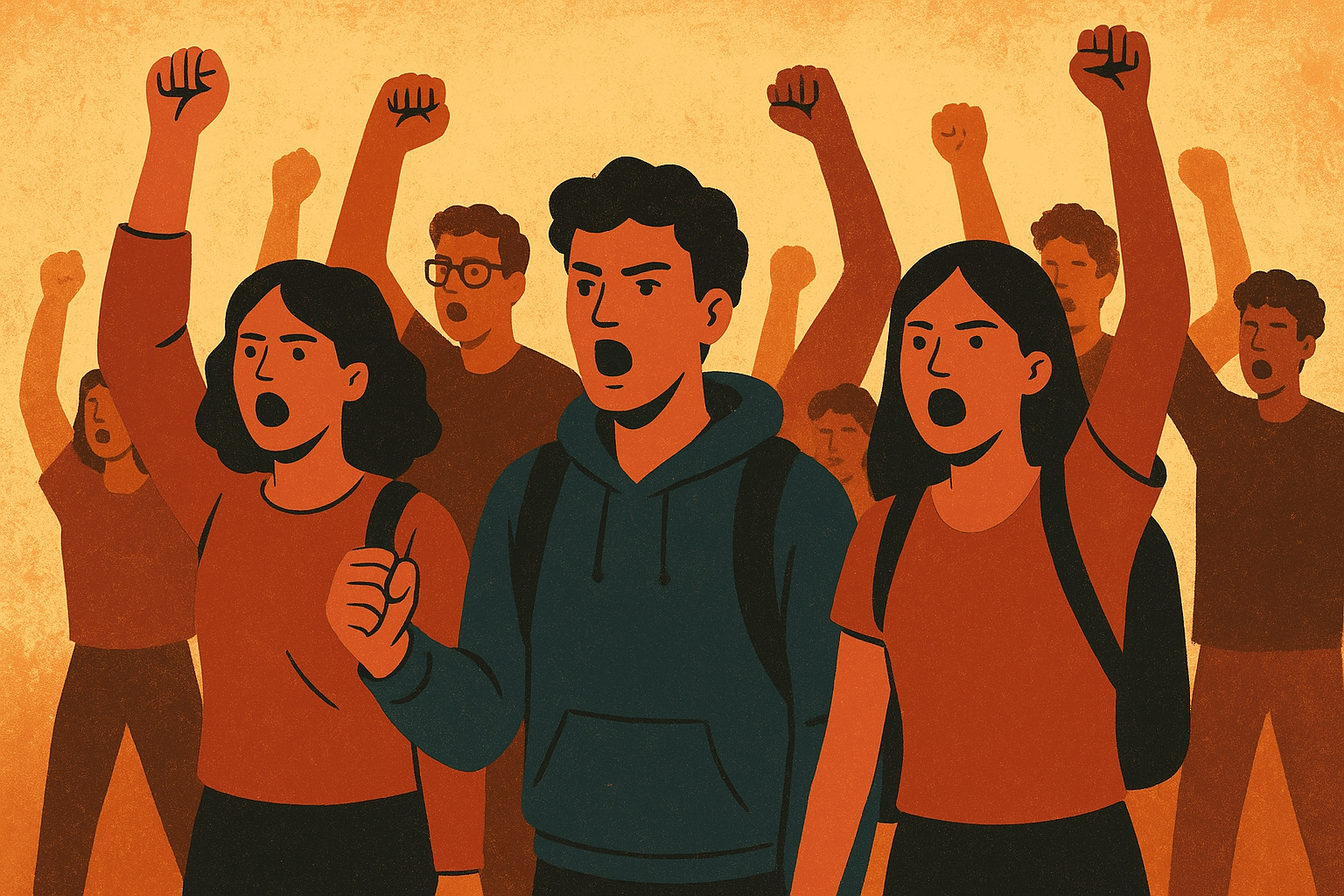Last week, I watched A Taxi Driver, the 2017 film directed by Jang Hoon and starring Parasite’s Song Kang-ho. Newsfeeds were still bringing stories about Nepal’s Gen-Z protestors, with both doubts and hope cast over the mobilisation of the public. History repeats at regular intervals albeit with varied results, I thought. Set right in the middle of Gwangju’s Uprising in 1980, the film narrates a nonchalant taxi driver’s accidental stride into political turbulence. It traces his arc from escapism to ‘complicity’. This complicity, however, was — and is — morally justified in the challenge it posed to authoritarian crackdowns on freedom.
The Gwangju Uprising is not a once-seen-later-lost theme in South Korean movies and series. In fact, one can easily name at least ten of these that use the protests either as a backdrop or the central plot driving the narration. Forty years have passed, yet the politically transformative shift that all of Gwangju engendered, led first by its youngsters and later joined by its working class, continues to draw listeners, readers, and viewers alike.
The Nobel-Prize winning author Han Kang considers Human Acts the most definitive in her oeuvre. Based on the Gwangju Uprising, the narration jumps from one character to the next, but begins with Dong-ho, a young boy who is, by accident, drawn into the protests. Dong-ho is like Manseob from A Taxi Driver, walking in inadvertently but staying on for the legitimacy of the causes they’re now entangled in. The ‘accidental protester’ is not uncommon. Just a year before Gwangju, South Africa’s Soweto Uprising (against the country’s apartheid system) too saw many young students show up in schools unaware of the demonstrations planned for the day, but became just as active as the mobilisers in marching towards the Orlando Stadium. But to draw attention only to the unpremeditated nature of participation disparages the grievances that had been simmering for long. It also overlooks the immediate acceptance of the cause by such ‘accident protesters’ on being made aware of the direness of their country’s state of affairs.
Back to Gwangju. Towards the end of 1979, a coup d’etat in Seoul installed Chun Doo-hwan as the country’s new military dictator. Martial law was imposed and dissent was met with brutal crackdown. Reportage was heavily censored and curtains were drawn on universities. It is a truth universally acknowledged that the most politically aware units, outside of active politics itself, brew within educational institutions. So, every dictator’s arm, seeping in ire, targets these spaces first. Prevent with brute force before curing with a doubled up version of the same. But Chonnam National University’s students rose in protest, primarily concerned by the closing of their university, and largely, by the massacre of democracy in the country. The dictatorial rule responded by firing on the protesting crowd, getting several of these students killed, either then or later, by torture. The military did not wait to distinguish between protesters and bystanders. The total toll came up to more than 2000. While the uprising, as a stand-alone political event, hardly reaped any success (it was suppressed by Chun’s forces), it became the nudge that ultimately forced the government to hold elections seven years later.
In 1979, when the students of Chonnam organised themselves, unbound by allegiances to the status quo, those outside Gwangju resented the open invitation to skirmish that ‘ill-informed’ youngsters were handing out. A similar treatment was on display early this September when the Gen-Z of Nepal erupted in protest. Many media reports intended to mark this as a lesser showdown against social media ban — a reason that could be isolated into triviality soon enough. This falls into territory that Foucault would define as power-knowledge, and especially its second tenet: of power, cloaking its intentions, to craft knowledge that subscribes only to its own merit. If narratives can be built by deliberately misconstruing reality, the incumbents can deem it a solid escape.
But the violent protests in Kathmandu broke out a whole week after the ban was announced. On September 6, a minister’s car ran over an eleven year old, leaving her untended to die. The Prime Minister belittled this as a ‘normal accident’. So, were the protests organised only to condemn the death of a child? It is extremely reductive to anchor such far-fetching political shifts to a singular event. But it is also important to look at that one event as a stand-in for the rule’s undeniable disgust for the commoner’s troubles. The protests shot up in view of economic distress, increasing inequality, over-reliance on informal work, rampant corruption, and an overall distrust of the State.
All it took was one trigger that could translate the collective and cumulated experience of anguish into action, much like Tiananmen Square thirty decades ago. Students of Beijing were then angered by the death of Hu Yaobang, a pro-reform CCP leader, in April of 1989. They did not initially have the resources or intent to organise themselves on a large scale. But some students, disappointed by the lack of collective action, decided to call for hunger strikes, the first slated to start at Tiananmen Square. What began as a students’ protest soon drew forces from the common working class. The poor working conditions and lack of unionisation had left these workers with a mound of troubles at the time. Grievances thus started to collate, and a stronger, more radicalised movement against bureaucracy began to take shape with it. The protests were crushed, but these marked a spectacled legacy nonetheless.
Nepal, following patterns from Sri Lanka and Bangladesh, successfully challenged and overthrew those in power. The former ministers and heads of state, in clear upheaval of the glory they once enjoyed, fled — at least those who could. Many new leaders who emerged from Nepal’s protests have now announced their political ambitions, further affirming that these weren’t the trivial mobilisations they were made out to be at first. It also subverts the traditional entryway to politics, ousting the elite and planting fresh voices where needed.
For governments in the region and all over the world, these protests serve as reminders of what might come if the State is left unchecked, devoid of accountability and transparency. But these leaders would rather claim that protests are likely to be led by anarchists, and launch themselves into a study of demonstrations that have historically threatened the status quo. Studying the nature of older protests would, in their opinion, help inform the State’s response in case the worst happens.
However, without offering tangible solutions to bridge the social and economic inequality in countries, ‘prevention’ is far from possible. You cannot expect endless endurance from a public that is running out of opportunities of sustenance, is driven to poverty as a result, all while witnessing the high lives and security that billionaire-politicians flaunt. You cannot expect the suppression of dissent to play forever-pretend if all you’re doing is dousing fire with more petrol. And if you must study, study protests not to learn the methods of control, but to understand the issues that needed to be addressed for actual peace.
From Gwangju to Kathmandu, the lesson is simple: remember that you are a government of, for, and constituted by the people. It is enough to remember that much.








